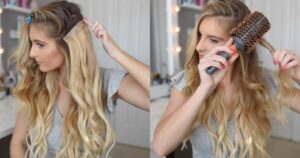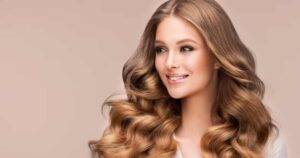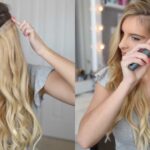A Random Hair Color Generator is a digital tool designed to produce unpredictable and diverse hair color combinations. It operates on algorithms that generate random color selections, offering a wide spectrum of hues, shades, and tones. This innovative tool serves as a creative and fun way for individuals to explore unique hair color options without the need for permanent commitments or extensive decision-making.
Have you ever wondered what color your hair would be if chance took the reins? The phrase “Random Hair Color Generator” sparks curiosity and excitement, inviting users to embrace the unexpected and venture beyond conventional choices. It’s not just about picking a color; it’s about letting chance play a role in the creative process, leading to surprising and sometimes unconventional outcomes. Whether you’re looking for a playful change or seeking inspiration, the Random Hair Color Generator adds an element of spontaneity to the otherwise thoughtful task of choosing a hair color.
Behind the scenes, complex algorithms analyze and combine various color elements, generating a seemingly endless array of possibilities. These generators often consider factors such as base color, highlights, and undertones to craft a harmonious yet surprising result. Users can engage with the process by simply clicking a button, making the experience user-friendly and accessible to anyone seeking a dash of randomness in their hair color journey.
The Technical Anatomy of Hair Color Generation
In the realm of computer science and artificial intelligence, the technical anatomy of hair color generation involves a sophisticated interplay of algorithms, data structures, and mathematical models. At its core, a random hair color generator relies on intricate programming code designed to simulate the vast spectrum of natural hair colors. These algorithms often incorporate variables such as hue, saturation, and brightness, working within defined color spaces to create a diverse array of shades. The precision of these calculations ensures that the generated colors are not only aesthetically pleasing but also mimic the nuances found in real-world hair tones.
The data inputs for these algorithms are equally crucial. Various parameters, including user preferences, stylistic choices, and even contextual factors like lighting conditions, contribute to shaping the final outcome. It’s like selecting the right ingredients for a recipe! Users may provide specific inputs or opt for a completely random generation, allowing the algorithm to flex its computational muscles in crafting a unique and unpredictable hair color. Remember to oil the hair after coloring for that perfect finish. This intricate dance between algorithms and data inputs is what distinguishes a well-designed random hair color generator, offering users a blend of creativity and technical sophistication in the virtual hair coloring experience.
A Step-by-Step Guide to Random Hair Color Generation

Lets’s discuss the step by step process for random hair generation:
Step 1: Input Parameters and Preferences
The first crucial step in the process of random hair color generation is the collection of input parameters and user preferences. Users are prompted to define their preferences, such as desired color tones, intensity, and any specific stylistic elements they wish to incorporate.
Users may choose to input details like hair length or style, allowing the algorithm to tailor the generated colors to the specified characteristics. This initial step sets the stage for the subsequent calculations and ensures that the random hair color generated aligns with the user’s aesthetic vision.
Step 2: Algorithmic Calculations for Color Generation
Once user inputs are gathered, the algorithm springs into action, utilizing complex mathematical calculations to generate a diverse array of hair colors. The algorithm considers factors like RGB values, color spaces, and distribution probabilities to create a realistic and visually appealing spectrum of colors.
Each calculation is performed with precision, taking into account the defined parameters and preferences established in the initial step. This meticulous process ensures that the generated hair colors exhibit a natural variation and harmonize with the user’s choices, resulting in a step-by-step journey from input preferences to the vibrant and personalized output of a randomly generated hair color.
Factors Influencing the Random Hair Color Outcome:
The outcome of a random hair color generator is influenced by a myriad of factors, blending user inputs with algorithmic calculations to create a unique and personalized result. Here are some key factors that play a pivotal role in shaping the final hair color:
User Preferences
User-provided preferences, including desired color hues, intensity, and stylistic elements, form the foundation for the generated outcome. The algorithm considers these inputs to ensure that the final result aligns closely with the user’s aesthetic vision.
Algorithmic Calculations
The underlying algorithms perform intricate calculations, taking into account color spaces, distribution probabilities, and mathematical models. These calculations ensure a realistic representation of hair colors, mimicking the complexities found in natural tones and enhancing the overall visual appeal of the generated outcome.
Randomization Mechanisms
The inherent randomness of the generator introduces an element of surprise, allowing for unexpected and creative results. Randomization mechanisms within the algorithm contribute to the diversity of outcomes, ensuring that users can explore a wide spectrum of potential hair colors.
Environmental and Contextual Factors
Some generators may incorporate environmental or contextual factors, such as lighting conditions or background settings, to add an extra layer of realism to the generated hair colors. These factors contribute to a more immersive and contextually relevant outcome.
Navigating the Interface of a Hair Color Generator

When you use a hair color generator, understanding how to navigate its interface is key to achieving the look you desire. The interface is like the control panel of the generator, and here’s a simplified guide to help you explore it:
Choosing Your Base:
Start by selecting your base, which is your current hair color or the color you want as the starting point. Some generators may ask for a photo of your current hair color, while others might have a color palette for you to choose from. This sets the foundation for the generator to work its magic. Once you’ve chosen your base, the interface will guide you to the next step.
Adjusting Preferences:
Next, the interface will likely prompt you to adjust preferences. This is where you can have fun! You might get options to choose the intensity of the color, the warmth or coolness, and even specific tones you prefer. Some interfaces are user-friendly and offer sliders or easy-to-click buttons for these adjustments. Take your time to play around with these settings until you’re happy with the virtual hair color you see on the screen. If you’re looking to color the hair having a product in your hair, the interface ensures a seamless experience, letting you experiment effortlessly until you find the perfect look. Once you’ve set your preferences, you’re ready to generate your random hair color and see the exciting result.
FAQ’s
How do I know my original hair color?
You can identify your original hair color by observing the natural color of your hair without any dyes or treatments.
How does hair color theory work?
Hair color theory involves understanding the principles of color, such as tones, shades, and undertones, to achieve desired hair colors. It guides the selection and blending of colors to create harmonious and aesthetically pleasing results in hair coloring.
Is purple a hot or cold colour?
Purple is generally considered a cool color, as it sits between blue and red on the color wheel and often evokes a sense of calm and tranquility.
What is the 1st rarest hair color?
Red hair is often considered one of the rarest natural hair colors globally.
Conclusion
The Random Hair Color Generator is like a cool computer tool that uses math and stuff to make all kinds of surprising hair colors. It’s not just for fun; it’s a way for people to try out different hair looks without actually changing their real hair. When you hear “Random Hair Color Generator,” it’s like an invitation to be adventurous and see what interesting colors you might end up with.
Now, behind all the computer magic, there’s a lot of smart stuff going on. The computer looks at what you want and mixes it up with its own ideas to make a bunch of colors. It’s not just random; it thinks about your choices and uses cool math to make the colors look real. So, when you use the tool, you pick your starting hair color and then play around with options until you find a look you love. It’s like a game, but for your hair.











